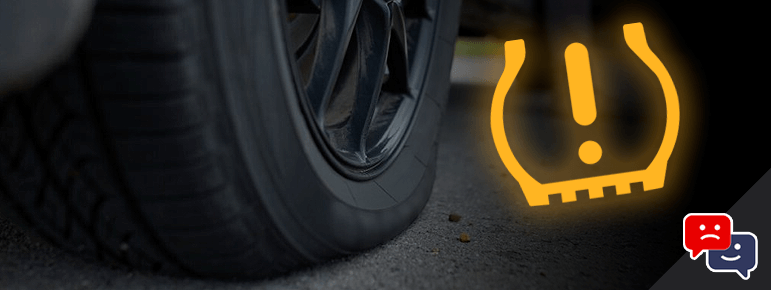Last Updated on April 19, 2024
Driving with underinflated tires is never ideal, but if you should need to, then it’s important to recognize the point at which doing so becomes dangerous. How long can you drive with low tire pressure?
You can drive 50 miles safely on low tire pressure. But in ideal circumstances, you should have the pressure adjusted as soon as you realize you have low tire pressure.
However, driving 50 miles on low tire pressure is only ever safe if your tire is just 5 to 10 psi low on air. Anything greater than 10 psi becomes extremely dangerous.
Because under inflation is a downright dangerous condition on the road, and it’s important to rectify low tire pressure as soon as you can.
Not to mention driving on low tire pressure will accelerating tire wear and can cause handling problems.
But how long can you drive with low tire pressure before facing some serious consequences?
In this blog post, we’ll cover knowing the right psi levels for your vehicle. Then we will cover what happens if you continue driving on soft tires. So let’s get started!
How Long Can You Manage with Lower Tire Pressure?
Most modern cars have a low tire pressure sensor that will let you know when your air pressure is outside of normal parameters. This warning is indicated by the orange or yellow tire pressure light.
Many auto manufacturers allow up to 25% air loss before activating the TPMS light. So, as an example, if your recommeded tire pressure is 35 psi, than the TPMS light would not activate until the pressure drops to around 34.75 psi.
Fact is, this warning on your instrument panel isn’t just for show; the Federal Motor Carrier Safety Administration (FMCSA) advises that “properly maintained tires aid drivers in preventing and mitigating crash situations.”
In addition, low tire pressure is at least partially responsible for 33,000 accidents annually, according to the National Transportation Safety Board.
As such, the questions shouldn’t be “How long can I drive on low tire pressure,” but rather “How soon can I get air in my tire?”
Avoiding Low Tire Pressure
Reduced pressure in your tire increases your risk of tire blowout due to the buildup of heat. Overall, this makes your tires more susceptible to punctures, reduces handling, and harms fuel economy.
The following situations can cause low tire pressure in your car:
- Changes in temperature
- Damage to your rim
- Puncture in your tires
- Potholes
- Faulty valve stems
- Car sitting for extended periods
Driving with low tire pressure can also cause your tread to wear unevenly, prompting the need for an earlier tire replacement.
As such, you shouldn’t be going on longer journeys when your tire pressure is low, especially at high speeds. Doing so increases your risk of injury and can damage your vehicle.
Should I Worry About Low Tire Pressure?
When it comes to your tires, don’t let their pressure dip too low – that can lead more than just premature wear-and-tear.
Without adequate pressure levels in the tire, you might find yourself on the receiving end of a tire bubble or worst – a blowout. A blow out can be very dangerous and lead to an accident.
In fact, there are more than 250,000 accidents yearly due to low tire pressure. And 75% of all roadside flats occur because of low tire pressure. Annually, low tire pressure is the cause for more than 33,000 injuries.
Maintaining the proper air pressure in your car tires is critical. It’s no wonder that experts recommend regular checks of tire pressure to ensure safety on the road.
The small effort it takes to keep an eye on the inflation of car tires pays off huge in peace of mind, not to mention potential savings on repairs down the line too.
Final Thoughts
There are a number of reasons why it’s foolhardy to drive with low tire pressure, but if you must, then try to limit your driving to under 50 miles.
You may not suffer any noticeable ill effects from driving with low tire pressure, but doing so does make you more susceptible to accidents.
The answer to how long you can drive with low tire pressure is “as little time as possible.”
Have you ever driven on low tire pressure? What was your experience like? Tell us in the comments below.

Managing Editor
Christopher is an automotive technical writer. When he’s not at the local autocross event, he can often be found working on one of his cars. Specializes in automotive class action law, industry trends, and automotive maintenance. Email me direct, or learn more about us

